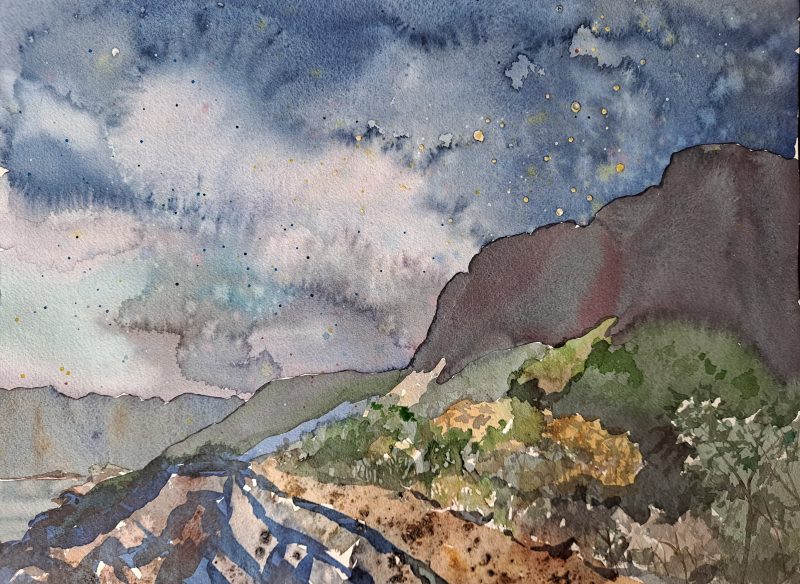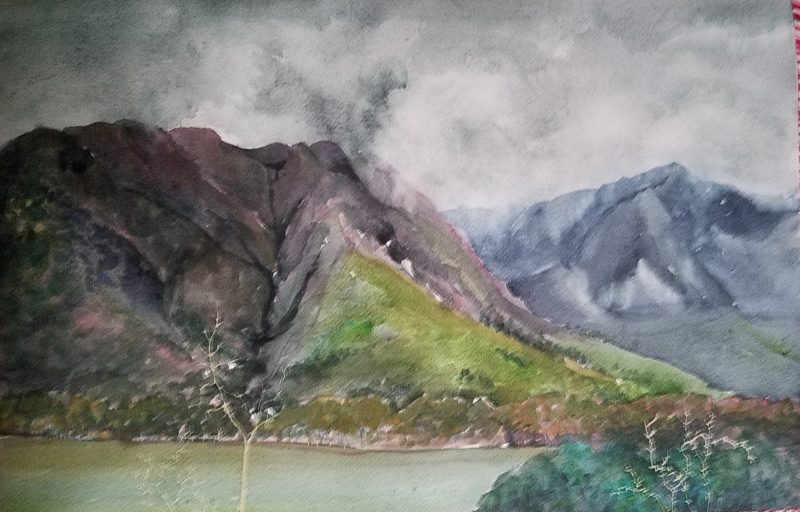ʻŌhikilolo means ‘crazy crab’ because of the season when they would come ashore so they would fill the ground and cover the roads. Part of the Koa ‘Ike vision is to see this phenomena return instead of surviving as only stories told by tūtū. Kumu Silva used to tell the story of when these crabs would cross the roads and it was his dream that they would someday return.
I went to this site many times, before painting it. One winter day, I watched whales offshore, unbelievably close. This place is full of wahipana and moʻolelo and in the valley is a site of various rituals important to Waiʻanae families. It was the valley of chiefs, the ones before the Kamehameha dynasty began and holds a lot of mystery. It has a special hidden quality, more than any other wahipana I worked in during this project. I wouldnʻt say I felt unwelcome or afraid, I just felt that it was a place to be respected as kapu, for me, at this time. So I painted from the roadside in this area and never ventured past the sunshine.
It is for this reason, that two of them are not in the show. Perhaps, when it is the right time, they will be shown, but for now, they are ʻhiddenʻ. One that is in the show, is from the evening looking east with my back to the sea. I started it during the day but when I got home to finish it, it felt like it should be night, and with stars, and so it was.
In a way, this area is the heart of the vision of this project. To protect a landscape is to let it be, ʻundisturbedʻ is a wish that is counter to most human impulse, I think, especially postmodern man. We see a landscape and the first thought is: what can I use it for? The next, is, How can I make/change it to suit me? It is not our first instinct to just stand and be in and part of a landscape. Watch and see. Iʻm guilty of driving past ʻŌhikilolo without thinking or seeing it, like a black hole, I pass Keaʻau and before I know it, Iʻm at the Mākua cave.
See Jan Becket‘s photos of the Kea’au and ‘Ohikilolo

